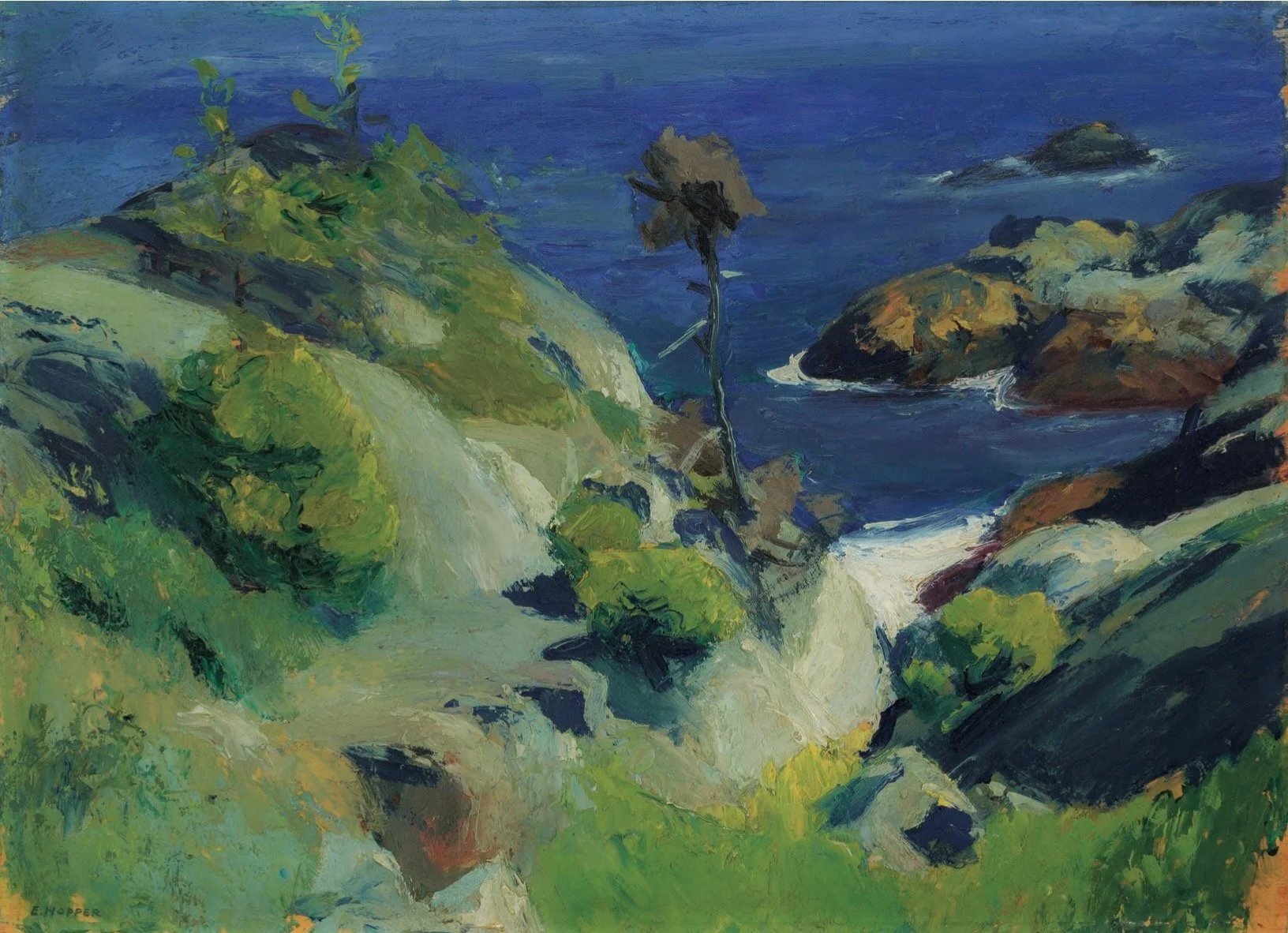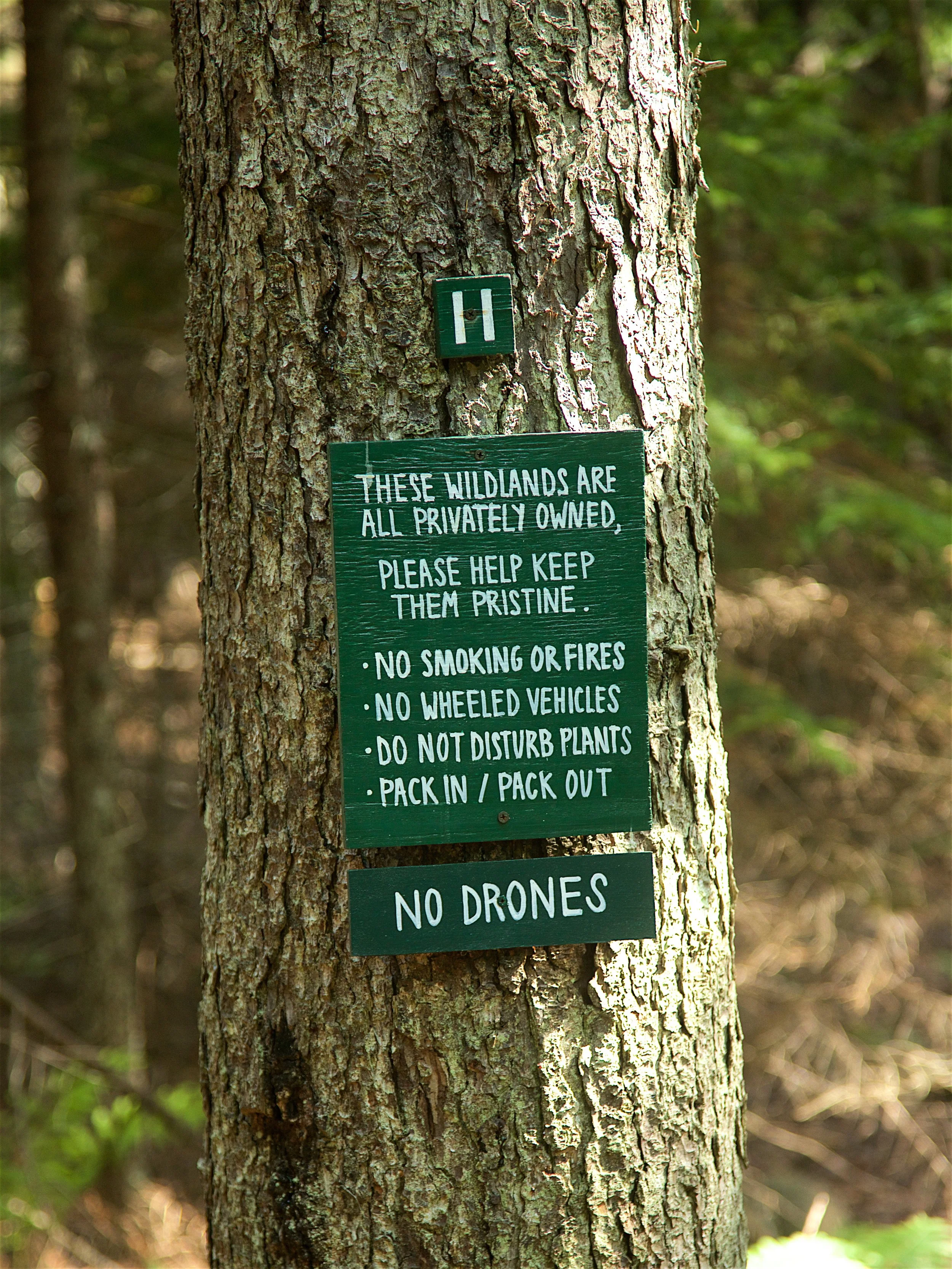The Wildlands of Monhegan Island
Art, Ecology, and Landscape Preservation on a Maine Island
To the first-time visitor, Monhegan’s Wildlands are completely unexpected, remarkably wild, and notably subtle. Their history presents a captivating story of preservation and enduring stewardship by a small community—a story that should inspire every conservationist and land trust in the United States. Fortunately for everyone interested in wildland conservation and New England landscapes, this history is now beautifully conveyed in a richly illustrated volume produced by the renowned art publisher Rizzoli. The new book, Art, Ecology, and the Resilience of a Maine Island: The Monhegan Wildlands, features many artists who have over the years visited and painted on Monhegan, among them some of the country’s greatest landscape artists. The book is reviewed in our Bookshelf section. An accompanying exhibition of original art, photographs, maps, science objects, and historical documents will open in December at the Bowdoin College Museum of Art in Brunswick, Maine.
View along the wildland shore to Black Head. Photo © David Foster
The tiny Monhegan Island, barely a square mile in land area, lies about 10 miles off the coast and is readily reached by ferry from Port Clyde or New Harbor, Maine.
Art, Ecology, and the Resilience of a Maine Island: The Monhegan Wildlands
Book and Catalog: Edited by Barry Logan, Jennifer Pye, and Frank Goodyear.
Employing art, science, history, and a deep awareness of the power of land conservation, ten authors and three gifted editors convey the beauty of the island, the nature of its small community, and the ecological forces that have shaped both over millennia. The volume is notable for its breadth of perspective into the interactions among people and nature that emerge on every page through the stunning art, photography, and illustrative materials. Artists have long joined fishermen, other permanent residents, and dedicated seasonal visitors in forming this intimate community. Their work conveys the changing and diverse nature of the place over seasons and centuries.
Contributions come from an extraordinary cast of artists, including Rockwell Kent, Edward Hopper, Robert Henri, George Bellows, Samuel Peter Rolt Triscott, Sears Gallager, Barbara Petter Putnam, Frederic Dorr Steele, Teco Slagboom, Mary King Longfellow, Randall Davey, Lynne Mapp Drexler, Maud Briggs Knowlton, William Partridge Burpee, William Trost Richards, Edward Redfield, Mary Stuart Mason, and John Hultberg. The artworks are accompanied by striking images, commissioned for this volume, by the photographer Accra Shepp.
Exhibition: Bowdoin College Museum of Art. December 12, 2024 - June 1, 2025.
Exhibition: Monhegan Museum of Art and History. July 1, 2025 – September 26, 2025.
Curated by the volume editors, this exhibition brings together original art, historical documents, photographs, and the products of many ecological studies to convey the history of change and conservation on Monhegan Island. Notably, while the focus centers on and continually returns to aspects of nature and the beauty of the island’s interior forests, open meadows, and magnificent and rugged coastline, the illustrations and explorations convey the deep human connections to the place. These cultural legacies range from Indigenous pre-history and early European fishing outpost to the development of a permanent settlement that chose to maintain its limited size and nature by conserving 70 percent of the island in wildlands that are allowed to thrive unimpeded by human intervention.
Monhegan Landscape, ca. 1916–19. Edward Hopper (1882–1967). Oil on panel, 12 x 17 inches. Collection of The Herbert F. Johnson Museum of Art, Cornell University.
One Wildland at a Time - Richard Farrell
Monhegan’s history reveals that the vision responsible for the wild nature of the island today originated with two individuals. In the 1950s, Ted Edison, son of the inventor, was inspired by yearly visits to Monhegan, and by the wilderness writings of Bob Marshall, to propose the development of a community based nonprofit, the Monhegan Associates, Inc. (MAI), to conserve much of the island in a wild state. Since Edison’s death, the minutes of MAI reveal member Richard Farrell’s persistent advocacy for the sanctity of the wild quality of the resulting land holdings. Both men fit the image of “spirited people who will fight for the freedom and preservation of the wilderness” that Bob Marshall sought when founding the Wilderness Society.
In his essay from this issue of From the Ground Up, Richard Farrell addresses the perennial challenge for Wilderness preservation, maintaining a strict standard of wildness that separates Wildlands from conservation lands that remain open to active management while protected from future development. Farrell senses and fears an increasing trend of blunting the wild and accommodating modern sensitivities by improving paths and access, adding informational signage, and removing non-native plants. In the spirit of Marshall and Edison, he defends the vital need to allow nature to develop unimpeded and for people to experience the wild.
Chasing Nature, Chasing Hope - Naturalist Bryan Pfeiffer
For many years, Monhegan has inspired artists and naturalists alike. Bryan Pfeiffer, essayist, photographer, naturalist, and “boy explorer” (as he calls himself), has been visiting Monhegan for decades, originally as a bird tour leader. In his interview with us, Pfeiffer describes his many visits to Monhegan, calling the reader to imagine the songbirds that “fall from the sky” on their autumn migration. He also describes the human community there, of lobster fishers, artists, misfits, and, in the summer, scores of day-trippers who may never experience the fullness of the Wildlands on the island. These days, on Pfeiffer’s visits, he spends less time with birds and less time with people, instead finding peace and inspiration in the wild forest and the spectacular headlands.
What is unexpected is that these Wildlands have existed for over a half century in near complete obscurity from the conservation community, despite serving as the centerpiece for many of the great landscape artists of the past three centuries. Who would expect a wildly dynamic and permanently preserved forested landscape to occupy 70 percent of a 600-acre island that has been continuously settled for the last four centuries? Not I. Despite devouring the literature and tapping the knowledge of countless conservationists as we compiled the recent report Wildlands in New England, the name Monhegan never arose. It was only by pure coincidence that I stumbled onto this landscape in heading toward northern Maine on field research for the report. A suggestion from my wife that we visit the island for a day led to a walk off the ferry and out of town where we encountered a trail and singular small sign indicating we were entering into the Wildland.
Photo © David Foster
From that point, more than 20 miles of trails reveal a captivating landscape with remarkable diversity—wild and dynamic toward the north end where old forests and rough terrain are broken by winter blowdowns; rewilding closer to town and to the south where new forests have expanded into former sheep pasture to obscure stonewalls and battle with invasive shrubs; and interrupted along its perimeter with spectacular views from rugged rocky cliffs and wave-pounded shores. Throughout, the Wildland messaging is subtle and comes entirely from the land. No fancy brochure or signage, no trail app, no web map. Just a simple one-page map adequate to get one started and quickly lost, and rudimentary trails effectively cut through countless winters’ blowdowns. Nature is the focus, and the few guidelines are clear: no fires, leave and take nothing, no wheeled vehicles, and no drones. Whether appreciated through the art and writings of the new volume and exhibit or by hiking the wooded paths, Monhegan Island is a natural and cultural delight.
David Foster is an ecologist, Director Emeritus of the Harvard Forest, and President Emeritus of the Highstead Foundation. He co-founded the Wildlands and Woodlands Initiative in 2005 and was lead writer of Wildlands in New England: Past, Present, and Future in 2023. David has written and edited books including Thoreau’s Country: Journey Through a Transformed Landscape; Forests in Time: The Environmental Consequences of 1,000 Years of Change in New England; Hemlock: A Forest Giant on the Edge; and A Meeting of Land and Sea: The Nature and Future of Martha’s Vineyard.



